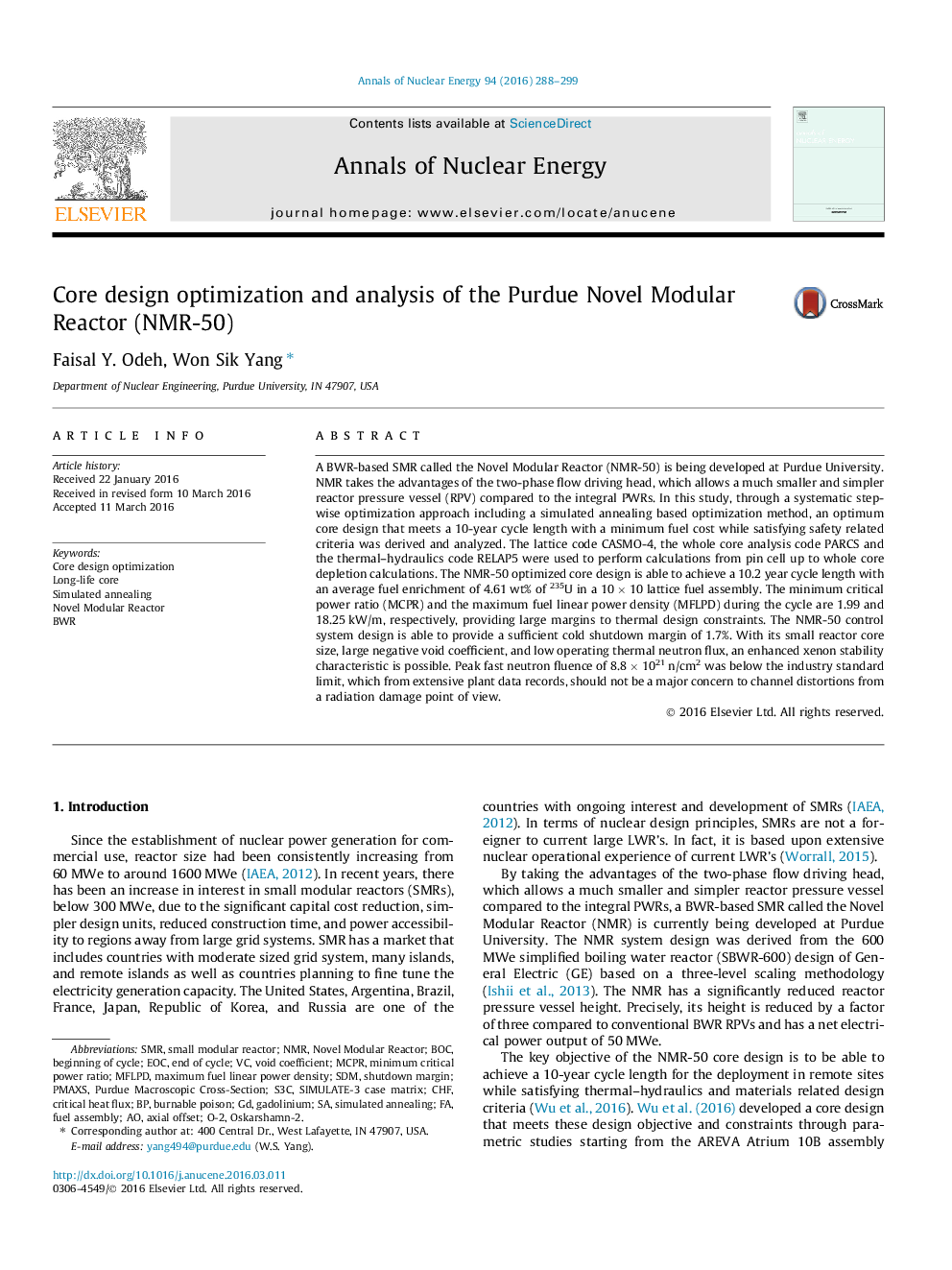| Article ID | Journal | Published Year | Pages | File Type |
|---|---|---|---|---|
| 8067678 | Annals of Nuclear Energy | 2016 | 12 Pages |
Abstract
A BWR-based SMR called the Novel Modular Reactor (NMR-50) is being developed at Purdue University. NMR takes the advantages of the two-phase flow driving head, which allows a much smaller and simpler reactor pressure vessel (RPV) compared to the integral PWRs. In this study, through a systematic step-wise optimization approach including a simulated annealing based optimization method, an optimum core design that meets a 10-year cycle length with a minimum fuel cost while satisfying safety related criteria was derived and analyzed. The lattice code CASMO-4, the whole core analysis code PARCS and the thermal-hydraulics code RELAP5 were used to perform calculations from pin cell up to whole core depletion calculations. The NMR-50 optimized core design is able to achieve a 10.2Â year cycle length with an average fuel enrichment of 4.61Â wt% of 235U in a 10Â ÃÂ 10 lattice fuel assembly. The minimum critical power ratio (MCPR) and the maximum fuel linear power density (MFLPD) during the cycle are 1.99 and 18.25Â kW/m, respectively, providing large margins to thermal design constraints. The NMR-50 control system design is able to provide a sufficient cold shutdown margin of 1.7%. With its small reactor core size, large negative void coefficient, and low operating thermal neutron flux, an enhanced xenon stability characteristic is possible. Peak fast neutron fluence of 8.8Â ÃÂ 1021Â n/cm2 was below the industry standard limit, which from extensive plant data records, should not be a major concern to channel distortions from a radiation damage point of view.
Keywords
Related Topics
Physical Sciences and Engineering
Energy
Energy Engineering and Power Technology
Authors
Faisal Y. Odeh, Won Sik Yang,
